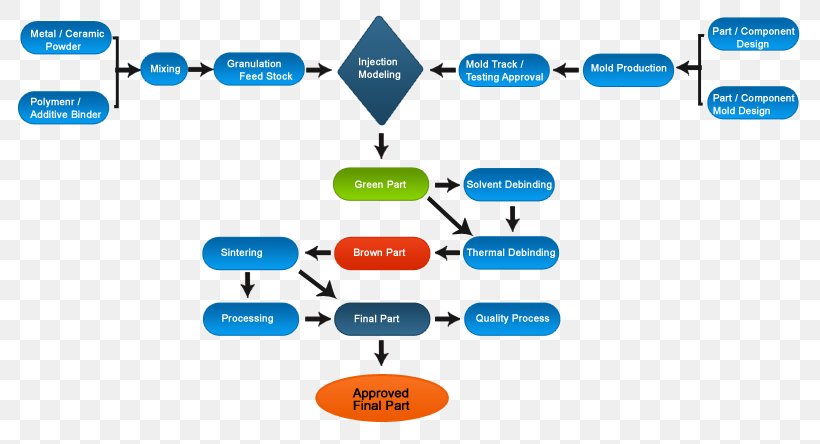The first step in cim begins with very fine ceramic powders which are compounded with polymer binders into a feedstock.
Ceramic injection molding process.
Process flow for capillary manufacturing process stage 1.
The more complex the shape the more advantageous injection molding will be over other fabrication methods.
In another branch of pim ceramic or carbide materials are used as raw materials in a process called ceramic injection moulding cim.
The ceramic injection molding process consists of four basic steps.
The resulting feedstock is then granulated.
The binders form a liquid medium which carries the ceramic powders into the mould during the injection stage.
During moulding the feedstock plasticizes and is injected with high pressure into the cavity.
The ceramic injection molding process begins with very fine ceramic powders.
The cim process gives production engineers and product designers more versatility in the use of ceramics as an alternative material with higher productivity lower manufacturing costs and improved product performance.
Ceramic injection molding is an innovative new process at indo mim under a six sigma controlled environment.
Ceramic injection molding is ideal for high volume production of complex tight tolerance components.
Using sophisticated mixing technology the powders are compounded with thermoplastic binders to produce a homogeneous pelletised feedstock.
1 when powder technologies are in question the key step in production process is choosing the adequate ceramic powder.
The mim cycle begins with preparation of a feedstock by mixing fine metallic powder with a binder comprising waxes polymers lubricants and surfactants.
The ceramic injection molding is very suitable for high volume production of complex design with tight tolerances like bonding capillaries.
Injection molded ceramics brochure injection molding eliminates the need for secondary operations normally required to produce complex geometrical shapes.

